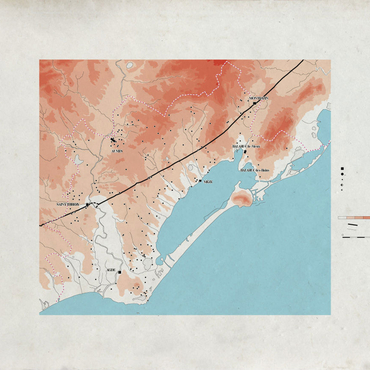
- Home
- Loupian, a villa in Gallia Narbonensis
- Farms in the 1st century BCE
- The Via Domitia and a roadside village
The Via Domitia was built in 118 CE, and extended from the Rhone to the Pyrenees. It ran along the shores of the Gulf of Lion, from Ugernum, (modern-day Beaucaire) to summo Pyreneo, now identified as the Col de Panissars near Perthus. From Béziers to Nîmes, between Cessero (Saint-Thibery) and Forum Domitii (a staging post in what is now modern-day Montbazin), the road passed through the Loupian territory less than three kilometres to the north of the villa.
To cross a smallish stream running through a valley, Roman engineers raised the level of the roadway using rubble and thus kept the slope from becoming too steep. They built a small bridge over the stream channelled by the accumulated material. Here, a secondary road split off in the direction of the watershed occupied by the farm of the new estate. Starting in the second quarter of the 1st century BCE, earth and stone constructions appeared on both banks of the valley and on either side of the road, forming a small village. Its inhabitants were mostly artisans, and certainly offered services to travellers. An abundance of coins attests to the regularity and volume of trade.
After the site was abandoned under the Early Roman Empire, a service road linked the villa with the Via Domitia. The discovery of a milestone with the inscription iter priv(atum), "private road", confirms this.

